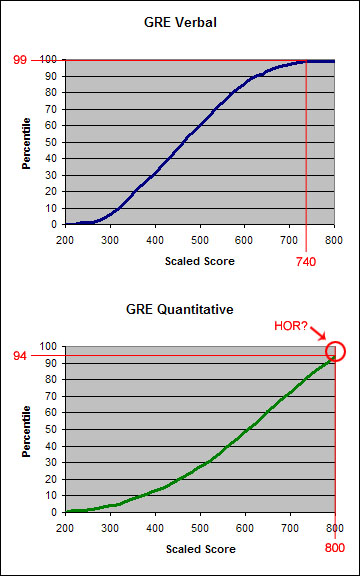|
| |
|
| |
|
|







|
|
TCHS 4O 2000 [4o's nonsense] alvinny [2] - csq - edchong jenming - joseph - law meepok - mingqi - pea pengkian [2] - qwergopot - woof xinghao - zhengyu HCJC 01S60 [understated sixzero] andy - edwin - jack jiaqi - peter - rex serena SAF 21SA khenghui - jiaming - jinrui [2] ritchie - vicknesh - zhenhao Others Lwei [2] - shaowei - website links - Alien Loves Predator BloggerSG Cute Overload! Cyanide and Happiness Daily Bunny Hamleto Hattrick Magic: The Gathering The Onion The Order of the Stick Perry Bible Fellowship PvP Online Soccernet Sluggy Freelance The Students' Sketchpad Talk Rock Talking Cock.com Tom the Dancing Bug Wikipedia Wulffmorgenthaler |
|
bert's blog v1.21 Powered by glolg Programmed with Perl 5.6.1 on Apache/1.3.27 (Red Hat Linux) best viewed at 1024 x 768 resolution on Internet Explorer 6.0+ or Mozilla Firefox 1.5+ entry views: 3716 today's page views: 612 (20 mobile) all-time page views: 3386653 most viewed entry: 18739 views most commented entry: 14 comments number of entries: 1226 page created Fri Jun 20, 2025 14:29:31 |
|
- tagcloud - academics [70] art [8] changelog [49] current events [36] cute stuff [12] gaming [11] music [8] outings [16] philosophy [10] poetry [4] programming [15] rants [5] reviews [8] sport [37] travel [19] work [3] miscellaneous [75] |
|
- category tags - academics art changelog current events cute stuff gaming miscellaneous music outings philosophy poetry programming rants reviews sport travel work tags in total: 386 |

| ||
|
- academics - [DRAFT COPY DO NOT DISSEMINATE] by  Bert, Fake C.FC(K), B.SD fakebert@glys.com The Graduate Records Examination (GRE) is believed to be an important aspect in applications to graduate schools, especially nationally-ranked ones with extremely competitive intake cutoffs. The author investigates the preparation, undertaking and offers post-analysis of said examination, and concludes that while generic challenges were posed as usual, results of this approach were modestly promising and support further research into this career path. Categories and Subject Descriptors G.R.E.2.1. [Preparation - Resources], G.R.E.4.6. [Empirical Testing Methodologies], G.R.E.8 [Other Research] General Terms GRE, ETS, Human Experimentation Keywords gre strategic planning, examination techniques, computer adaptive testing, stress acclimatization, language mining. 1. INTRODUCTION The decision to enter graduate school is not an easy one. Complications are compounded when this decision is taken late in an undergraduate career, especially when research metrics are ordinary with little hope of sharp improvement, and is a common problem encountered in the field of doctorate engineering. We observe a representative specimen (REALBERT, thereafter occasionally known as RB) and by this means hope to gain an understanding of, and offer solutions to, this challenge. 2. MOTIVATION AND PREPARATION 2.1 Motivation Graduate school is popularly perceived as a safe haven from a hostile "real world" [1], where the relative freedom of undergraduate life from the General Laws of Financial Necessity and Social Responsibilities may be propagated indefinitely, or at least for four or more man-years; Admissions to reputable programs of the sort that parents would be eager to inform other relatives of, and that those relatives would be reasonably expected to be aware of, is however not trivial. Acceptance rates are commonly in the range of twenty to thirty per cent [2] [3], and usually require heavy research experience. While the weak form of this problem under optimal conditions (i.e. papers in international conferences, multiple IOC gold medals, glowing letters of recommendation, internships at multinational companies, GPA 4.0++, devoted community organizer) has been solved and proven to almost surely [4] be a win for the subject (for sufficiently large numbers of applications sent), the general formulation for normalised subjects does not yield to even intensive repeated metasearch methods, and is suspected to be intractable [5]. The dearth of progress in the theoretical arena has led to empirical analysis being the preferred avenue of mainstream researchers, and in this vein we study the progress of the publicly available standard dataset REALBERT. 2.2 Preparation REALBERT represents the profile of a typical long-shot candidate, with inferior depth of planning and unwarranted optimism parameters. In this analysis, REALBERT was subjected to a five-day preparatory phase after obtaining a GRE testdate through forced elimination of options. Scheduling conflicts furthermore squandered much of this allocation, leaving the actual discounted period of data transfer available to be approximately three hours. REALBERT however had the benefit of proven training sets [6], and its performance was likely to have been asymptotically boosted by iterative enumeration of filtered vocabulary. Gains were maximized before the letter D, after which faulty memory allocation (see MALLOC) necessitated adaptive reductions in the uptake density. Hardware overheating forced REALBERT to exit prematurely and enter sleep mode before completing the procedure. The confidence measures towards the GRE at this point was a poor 0.12-0.18 (at 95% significance level). In summary, the preparation of REALBERT was woefully truncated and sub-optimal, which added to the difficulty level of the subsequent operations. 3. EXECUTION 3.1 Compulsory Subroutines At the prearranged time, the modified REALBERT was transported via circuit Bus. 198 to the central processor, PROMETRICTESTCENTER [7]. Naïve campus search techniques nearly doomed REALBERT to the dead-on-arrival fatal error, but an elevator shortcut to the third level was thankfully found before the chronological limit was expended. 3.2 Register Assignations REALBERT encountered various minor inconveniences while being loaded on the main system, as a consequence of the busy scheduler. Photographic and graphological identifiers were verified as per standard procedure. System security was exemplary, with hemispheric reflectors mounted atop the examination sandbox to provide a complete view of the cubicle-compartmentalised architecture. 3.3 Limitations It was discovered that specifics on the content of the GRE may not be revealed, as insisted on the product agreement. Further discussion will therefore focus on aggregate observations and trends. 3.4 Analytical Writing REALBERT was called upon to produce a GP-type essay in 45 minutes, and a similar critique in 30 minutes for the first benchmark, after some preliminary I/O device centering. REALBERT stumbled slightly over the lack of a built-in spell checker, but thankfully was not overly disadvantaged. 3.5 Break REALBERT was granted a ten minute reprieve for memory defragmentation and liquid garbage disposal. 3.6 Quantitative Reasoning REALBERT next answered 28 mathematical puzzles in 45 minutes for the QUANT benchmark. Although no obvious errors were thrown, the inefficiency of the REALBERT arithmetic processing unit was glaring. REALBERT took nearly 40 minutes to complete the test run, in comparism to superior implementations like MEEPOKMAN [8] which boast worst-case timings of 15-20 minutes. Possible explanations were the overly paranoid linear redundancy checks of REALBERT, and the outdated skim-and-return paradigm more suited to the pen-and-paper era of computing. 3.7 Verbal Reasoning REALBERT had to confront 30 prolix catechizations of dubious practical utility; The analogies were turbid, the antonyms soporific, the sentence completions tendentious and the reading comprenhensions sibylline. REALBERT struggled puissantly for noesis of this recondite pedantic material, but truckled to maladriot and lachrymose nonfulfilment. A few logic circuits blew out as REALBERT realised that the input data was not in fact an ingenious cryptogram, but a butchering of the English language. 3.8 Quantitative Reasoning II At this point REALBERT signalled to take a leak again, but was informed that only one break was allowed. With no recourse, another set of 28 maths questions was rushed through with legs crossed. 4. RESULTS One advantage of Computer Adaptive Testing (CAT) [9] is that the results are determined near instantaneously through parallel computation threads (in contrast to HAMSTER, which however has more forgiving operational requirements and is cuter). REALBERT achieved the humdrum scores of: Verbal: 740/800 Quantitative: 800/800  (Source: GRE Guide to the Use of Scores 2007-08 pp. 13) An interesting diggression would be on the claim of racial bias on the GRE [11]; Question: If people of different races receive significantly different average scores on any given test, is that test necessarily flawed? 5. CONCLUSIONS Preliminary results (presented above) thus far indicate some faint promise in the REALBERT dataset. However it must be remembered that the methodology taken is still very much in development, with some studies claiming near-zero predictive success of the GRE [12], with others funded by the GRE (predictably?) arguing in the other direction [13]. It must also be remembered that graduate school is in all probability a long and hard road [14] [15], with decent but not especially impressive remuneration. Still, it is not without its attractions, having lured a combined cohort of hundreds of thousands each year in the United States alone [16]. 6. FUTURE WORK Conditional on available application funding and the self-discipline of REALBERT's professors to refrain from rolling on the floor laughing, experimental feelers will be impudently extended to several good graduate schools in the final stages of hypothesis testing. We continue with the obligatory inspirational quote: - Benjamin Franklin This paper was made possible with inadvertent funding to the tune of US$170 (for the GRE examination fees) from Dad Corporation, and a grant for continuing research on the FMS (Father-Mother Scholarship). REFERENCES
Next: Mugs And Bunny
|
|||||||||||||||||||||||||||||||||||||||
 Copyright © 2006-2025 GLYS. All Rights Reserved. |
|||||||||||||||||||||||||||||||||||||||